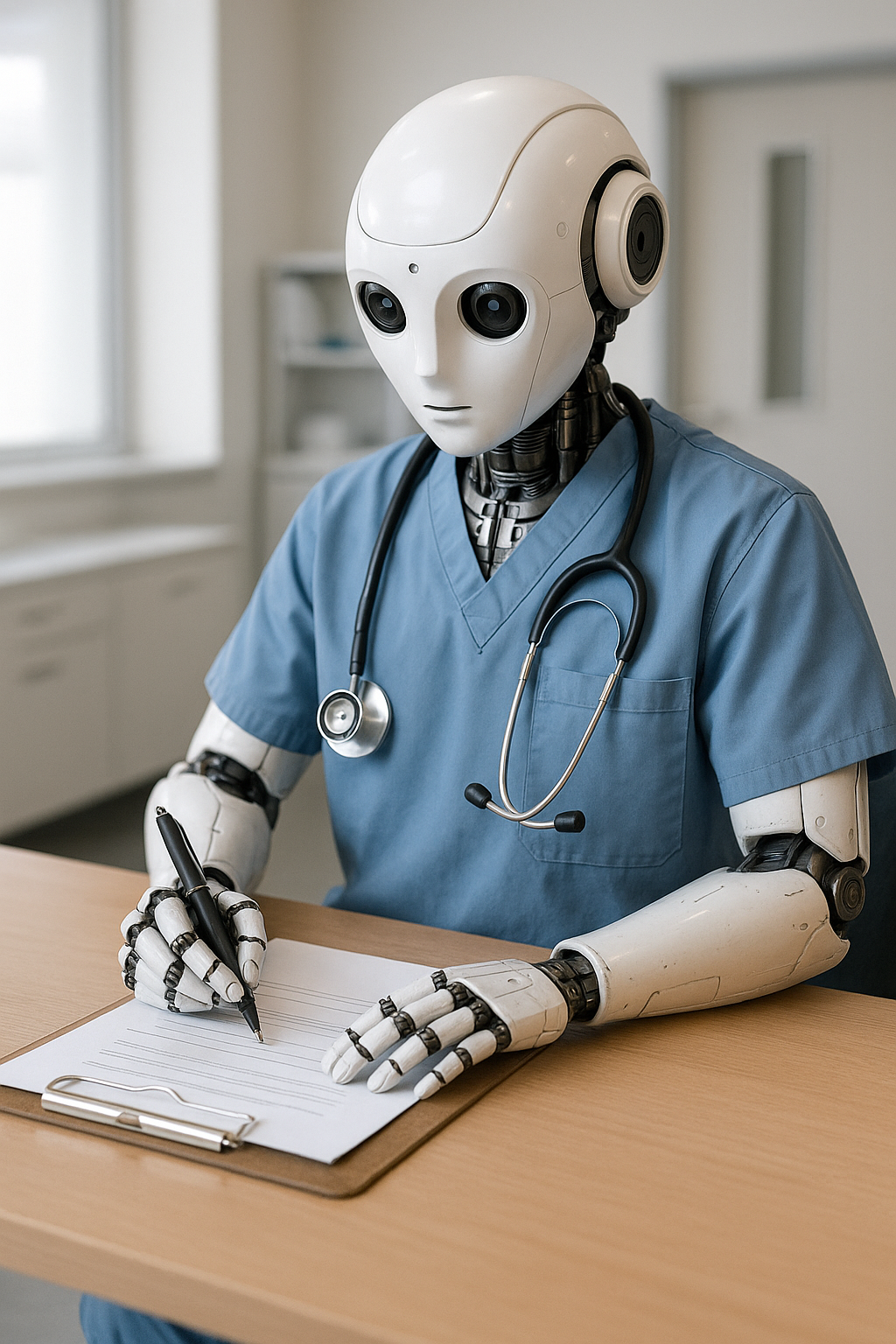We’ve lost touch with the present in healthcare.
Walk into any exam room today and you’ll see the evidence. Doctors staring at screens instead of patients. Nurses typing notes instead of making eye contact. Healthcare professionals staying late to document encounters rather than going home to their families.
The technology meant to improve care has created a barrier between providers and patients. But voice technology is changing that equation entirely.
The Documentation Crisis Nobody Talks About
Healthcare executives often view voice technology as just another digital upgrade. They’re missing something fundamental.
The real problem isn’t efficiency. It’s human connection.
We know that 62% of physicians identify excessive documentation requirements as their leading cause of burnout. But the ripple effects go deeper than statistics suggest.
When providers can’t focus on the person in front of them, patient care suffers. Continuation of care becomes compromised. The fear of lawsuits drives even more documentation, creating a vicious cycle.
Patients start hopping from one provider to the next because there’s no relationship. No connection. No trust.
Healthcare is still a business. When relationships break down, so does the business model.
How Voice Changes the Room
Voice technology transforms healthcare by letting providers do what they do best: have conversations.
Instead of typing while talking, clinicians can focus entirely on the patient. The technology records everything ambiently, processing conversations in real-time and converting them into structured documentation.
The change is immediate and profound. Eye contact returns. Empathy resurfaces. Providers can ask probing questions and build genuine rapport.
We’re not just solving a documentation problem. We’re restoring presence to healthcare encounters.
The technology handles the bureaucratic requirements automatically. It creates templates, manages workflows, integrates with electronic health records, and even handles automated coding based on the encounter.
This frees providers to focus on what matters: the primary complaint and the action plan to address it.
The Business Transformation
The numbers tell a compelling story. The voice technology healthcare market is projected to grow from $4.23 billion to $21.67 billion by 2032.
Organizations implementing voice technology report 30% reductions in administrative tasks. But the real value goes beyond time savings.
Reduced documentation time means lower labor costs. Fewer hours spent on after-hours paperwork. Decreased burnout leads to better retention, cutting expensive rehiring costs.
Most importantly, better patient relationships drive business sustainability. When patients trust their providers, they stay. When they stay, practices thrive.
Those making the switch now are positioning themselves with a competitive edge. They’re working smarter, not harder.
Addressing the Human Element of Change
The biggest resistance to voice technology isn’t technical. It’s human.
Healthcare executives worry about their teams. They’ve built relationships with staff members and fear technology will disrupt those bonds.
The key is education. Security comes from understanding what the technology does, how it works, and why it matters.
People don’t really know what AI is. It became a buzzword after ChatGPT, but AI has existed for years. The fear comes from misunderstanding.
AI can’t work without human input. The human element never disappears. It just gets amplified and focused where it matters most.
Voice technology won’t replace doctors. It will replace some administrative positions, but it will also create new roles focused on human quality assurance and patient interaction.
The goal is helping people understand how to work with technology to stay relevant and effective.
The Paradox of Human-Centered Technology
Here’s what most people miss about voice technology in healthcare: it’s making medicine more human, not less.
The augmentation of technology and clinical expertise creates better outcomes. When providers can focus on patients instead of paperwork, diagnostic accuracy improves. Treatment plans become more thoughtful. Patient satisfaction increases.
Voice technology removes the barriers that prevent authentic healthcare relationships. It eliminates the friction between caring and documenting.
We’re not replacing human judgment with artificial intelligence. We’re freeing human intelligence to focus on what machines can’t do: show empathy, build trust, and provide compassionate care.
The Future We’re Building
The transformation is already happening. We’re at the forefront of a massive shift that will reshape healthcare over the next four to five years.
Voice technology is expanding beyond documentation. We’re integrating with lighting systems, patient room controls, and medical equipment. The vision is completely hands-free healthcare environments.
But the real breakthrough isn’t technological. It’s human.
We’re creating healthcare environments where providers can be fully present with patients. Where technology handles the administrative burden so humans can focus on healing.
This represents something more fundamental than digital transformation. It’s about restoring the human element to healthcare while leveraging technology to make that connection more effective than ever before.
The organizations that understand this distinction will lead the future of healthcare. They’ll attract the best talent, retain satisfied patients, and build sustainable businesses.
Voice technology isn’t just changing how we interact with healthcare systems. It’s changing how we connect with each other in the most important moments of human vulnerability and care.
That’s the real revolution. Technology finally serving humanity instead of the other way around.



